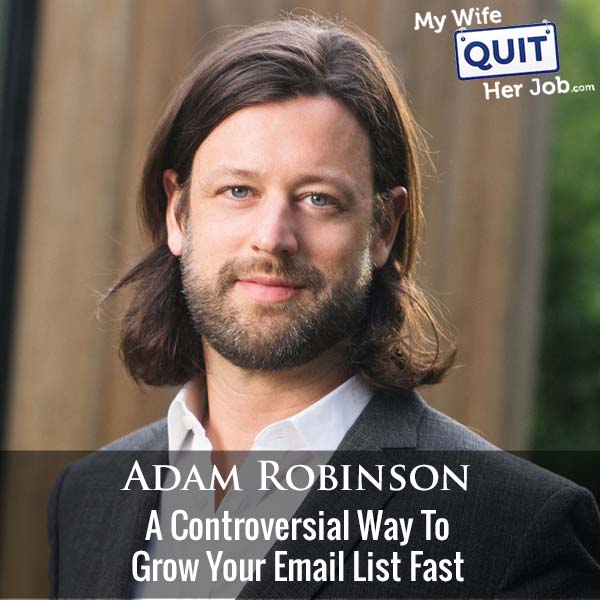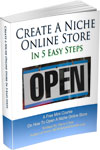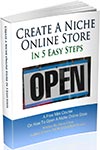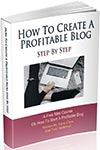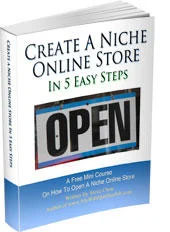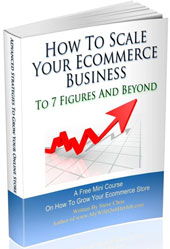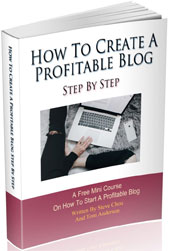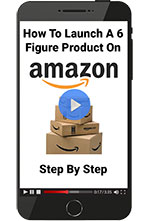Podcast: Download (Duration: 48:06 — 55.3MB)
I’m going to say this upfront. This episode may blow your mind. It’s about building an email list fast, but in a way that is slightly controversial.
Your first reaction is probably gonna be “Oh my goodness, is this even legal? I would never do that.”
But today, Adam Robinson is going to teach us the ins and outs of acquiring email addresses in this new and innovative way.
Get My Free Mini Course On How To Start A Successful Ecommerce Store
If you are interested in starting an ecommerce business, I put together a comprehensive package of resources that will help you launch your own online store from complete scratch. Be sure to grab it before you leave!
What You’ll Learn
- A controversial strategy to build up your email list fast
- How you can apply this strategy to grow your e-commerce store
- Is this method even legal and how to set it up
Other Resources And Books
Sponsors
Postscript.io – Postscript.io is the SMS marketing platform that I personally use for my ecommerce store. Postscript specializes in ecommerce and is by far the simplest and easiest text message marketing platform that I’ve used and it’s reasonably priced. Click here and try Postscript for FREE.
Klaviyo.com – Klaviyo is the email marketing platform that I personally use for my ecommerce store. Created specifically for ecommerce, it is the best email marketing provider that I’ve used to date. Click here and try Klaviyo for FREE.
BigCommerce.com – If you are interested in starting your own online store, then I highly recommend BigCommerce. Out of the box, it already comes with full functionality and you do not need to install additional plugins. Click here to get 1 month free
Transcript
You’re listening to the My Wife, Quartermaster podcast, the place where I bring on successful bootstrap business owners and dig deep into what strategies they use to grow their businesses. Today I have Adam Robinson on the show and he was introduced to me by my good friend, Chase Diamond. And just let me tell you this upfront, this episode may blow your mind. It’s about building an email list fast, but in a way that is slightly controversial. And your first reaction is probably going to be, oh my goodness, is this even legal? I would never do that.
00:27
but I’m curious as to whether your mind will change at the end of this episode. But before we begin, I want to thank Klaviyo for sponsoring this episode. Always excited to talk about Klaviyo because they’re the email marketing platform that I use for my e-commerce store and it depended on them for over 30 % of my revenue. Now you’re probably wondering why Klaviyo and not another provider. Well Klaviyo is the only email platform out there that is specifically built for e-commerce stores and here’s why it’s so powerful. Klaviyo can track every single customer who’s shopped in your store and exactly what they bought.
00:55
So let’s say I want to send out an email to everyone who purchased a Red Handkerchief in the last week. Easy. Let’s say I want to set up a special autoresponder sequence to my customers depending on what they bought, piece of cake, and there’s full revenue tracking on every email sent. Klaviyo is the most powerful email platform that I’ve ever used. You can try them for free over at klaviyo.com slash my wife. That’s K-L-A-V-I-Y-O dot com slash my wife. I also want to thank Postscript for sponsoring this episode. Now if you run an e-commerce business of any kind,
01:22
You know how important it is to own your own customer contact list. And this is why I focus a significant amount of my efforts on SMS marketing. SMS or text message marketing is already a top five revenue source for my e-commerce store. And I couldn’t have done it without Postscript, which is my text message provider. Now, why did I choose Postscript? It’s because they specialize in e-commerce and e-commerce is their primary focus. Not only is the tool easy to use, but you can quickly segment your audience based on your exact sales data and implement automated flows. I got an abandoned cart at the push of a button.
01:51
Not only that, but it’s price well too and SMS is the perfect way to engage with your customers. So head on over to postcook.io slash Steve and try it for free. That’s P O S T S R I P T dot I O slash Steve. And then finally, I wanted to mention my other podcasts that are released with my partner, Tony. And unlike this podcast where I interview successful entrepreneurs in e-commerce, the profitable audience podcast covers all things related to content creation and building an audience. No topic is off the table and we tell it like how it is in a raw and entertaining way.
02:21
So be sure to check out the Profitable Audience Podcast on your favorite podcast app. Now onto the show.
02:34
Welcome to the My Wife Quarter Job Podcast. Today I’m thrilled to have Adam Robinson on the show. Now, Adam is the founder and CEO of Get Emails, which is a company that he bootstrapped to $10 million in annual recurring revenue in 24 months with just six people. Now, I actually don’t normally have tool vendors on the show, but Adam caught my interest because one, he was introduced to me by my good buddy, Diamond, and two, he came to me with this really controversial way to build up your email.
03:03
fast. Now anyone who listens to me on the podcast or reads my blog knows that email is 30 % of my revenue on my store and it’s probably 90 % of my revenue on my wife quit her job. my ears immediately perked up. And when I first heard about this method, I was extremely skeptical. But now that I understand the technology, how it works, I can see how this can be useful for growing the sales for an e-commerce store. And in any case, we’re going to discuss this
03:32
controversial list building method today, and you can be the judge. And with that, welcome to the show, Adam. How are doing? Thanks, Steve. Happy to be here. So I know based on that intro, people are probably dying to know. So what is this controversial way to build emails? And how did you get into this business in the first place? So let’s talk about GetEmails. That’s the company. The name is pretty clear. And what GetEmails does in
04:00
the simplest application, which is what we’re talking about, is you can put our pixel on your website and we will resolve anonymous website traffic, meaning people who showed up, they did not fill a form, they did not buy anything. We can take that visitor and we can give you back a deliverable email address for that person. So it’s somebody that was on your site and in real time we can pass to Klaviyo or MailChimp or whatever you’re using an email address.
04:30
that will actually be as good as a lead that you got from Facebook. And the person was on your side, they’re interested, they showed some intent. Obviously it’s not as high of quality lead as a first party opt-in on your website. But I think it’s every bit as good as somebody who signed up on Facebook. And the price of this is just like dramatically lower than any other source of a new lead. Yeah, I can tell you like for the blog, I’m paying around
04:59
between two and $3 per lead. And then on Klavi, I’m not doing leads, I’m just doing direct conversions. But I think you’re like a fourth or a fifth of that price, right? Maybe more. The most expensive anyone’s ever gonna buy an email from us is around a quarter. And then at huge volume, can get to high single digit cents. And these are like, the aggregate is like a 30 % open rate on average in most cases, I think.
05:28
So it’s funny, I told my wife about your service and she was like, what? They can track me like when I surf on the web. she was curious how it worked. I’m curious how it works. And so if you can explain it in like layman terms for the people listening, roughly so they can get an idea of how it works and have them realize how freely information, how freely their information is actually accessible on various platforms. Sure. So I think
05:58
A really simple way to look at this is there’s this world of ad tech out there and there’s things tracking your behaviors across the internet so that you can be segmented and serve targeted ads and all of that world’s anonymous, right? So somehow they need to mark you with an anonymous identifier, right? In order to make this work. And that’s pretty simple.
06:26
This other world is like the MarTech world, is like messaging, right? Klaviyo, MarTech, know, attentive MarTech. It’s like, it’s, it’s not anonymized. It’s PII. It’s a sort of… What does PII stand for? Personally identifiable information. Okay. So the AdTech world works anonymously. Everything about it is, you know, your email’s not floating around in free space, right? But like, obviously,
06:56
order to email somebody, you need their actual email address. So the way this technology works is it sort of marries this ad tech world where you’re being tracked across websites, you’re floating around, there’s like cookies that are doing all this. basically what our software does is it takes all these vendors that are tracking everybody in ad tech and then we de-anonymize these anonymous fingerprints and
07:24
then basically, it comes to email, because that’s like the most useful sort of way to execute this. So we take the signals, we make them useful, and then we connect them to the platform where you’d deploy the messages. And in that process, the real reason this works so well is because we’re really good at cleaning the emails and deciding which ones you should have and you shouldn’t have, if that makes sense.
07:50
So you mentioned in the ad tech world, everything’s anonymous. Let’s just use cookies as an example, right? There’s this string of letters and numbers that represent some sort of record so that whatever company can decipher that and know that it’s me. But how is that information obtained? Like how do you decode that into like an email address? I think the most useful way to think about it is sort of how did that cookie get there in the first place? That’s when it became clear to me, right?
08:20
So there are companies out there. I think LiveRamp and LiveIntent are probably the two most common or the two biggest names like LiveRamp is public, LiveIntent, they have a monopoly on an email programmatic ad network, but LiveRamp’s public company, they actually pay email service providers to put a pixel…
08:47
in the bottom of every single email that like, for instance, like I’m just going to throw out vendors, right? Like, I don’t know if Klavia is working with LiveRamp. I know we did at my old ESP, but like they would pay you on like a CPM to get a script in your site so that when someone clicked on an email, it would put a cookie in their browser when they hit the webpage of their final destination. And that cookie would be an email hash, right? Like, well, not.
09:16
This is getting very technical. LiveRamp uses some other unique identifier, but other cookie pools. It’s basically just called an identifier. Yeah. But the reason I said email hash is because a lot of them work by encoding emails into this encryption language called MD5. So it looks to a normal person like a string of numbers and letters. A human being cannot un-encode it, but…
09:45
the same email address will encrypt to the same MD5 hash every single time. Got it. Incidentally, this is how passwords work if anyone’s listening. Like lot of times it’s encrypted in MD5 before it’s stored. Right. So if you have the email somewhere else, you can just, if you had a database of every email in America and then you MD5ed all of those, then you could just do a VLOOKUP, the MD5 in these cookies and see if you had the plain text message, which may or may not be what we’re doing.
10:15
And then furthermore, if you have the plain text message, which we have third party opt-ins for all of them, like we then go and say, okay, is this email actually active and opening and clicking in the rest of the email ecosystem? Like we’re buying a bunch of open and click data from these ESPs. And then we say, if they’re on your website and we have the plain text and they’ve opened or clicked in the last seven days, then we know we can give it to you. And there’s a very high likelihood that’s going to be high value.
10:45
to you. So that’s more or less the very big picture of how it works. let me just kind of summarize that in dumber language, I think. So basically, there’s this identity, like some third party is paying, just as an example, a bunch of these services to put a special identifier that doesn’t change across websites. So I mean, it’s encrypted, so they can’t just get your email. But this encryption string
11:13
represents an email and it doesn’t change across the web. So that’s why if they see that string, they know it belongs to this person. And then you just mentioned that you don’t pass along the email unless there’s activity on that email. How do you determine that? So, and this gets to like how I started getting emails. I actually owned a very small business email service provider, kind of like MailChimp. Our customers were different than MailChimp. They were sort of
11:42
I would say kind of baby boomer, mom and pop shop, not e-commerce. But we learned a lot of things about the email business from running it. We learned a lot about deliverability, which is this whole art and science of actually getting emails to inbox at scale. And one of the things like a revenue stream for a lot of email service providers is you can sell anonymous open and click data to people that find it valuable. It’s like a data discharge part of the email market.
12:12
So that literally is just business development. Like you go out and you pound the pavement and like people will sell you this data, like also sort of hashed or whatever. so yeah. So, so this is where we’re getting this last, and this is a real magic with getting emails, Like we would not have grown how we’ve grown. No one would continue using our service if the emails were bad and it actually hurt their ability to inbox, but using that activity filter.
12:41
as like a final stage of list cleansing. That is what makes these things work basically. So basically it seems like everything is being sold over the web. Like if I sign up for like someone’s news, let’s say it’s like Best Buy’s newsletter, chances are there’s, and I’m just using Best Buy as an example. I don’t know if they’re doing this, but if I sign up through a list, maybe they’re selling that information in this third party where it’s all getting aggregated and sold again is what you’re saying.
13:10
So the email addresses, I would be shocked if they would work. mean, look, there are definitely sort of publishers, know, dodgy websites or whatever, you’re like, you’re signing up to get health insurance and the terms of service. They were going to sell your information as many times as we can. Best Buy though. I would be shocked if that brand were selling any.
13:37
personally identifiable information about you. What could be happening is if they’re using, I don’t know who they would be using. If they’re using Salesforce marketing cloud, Salesforce marketing cloud could be selling the aggregate open and click information in the open market to, you know, companies like there’s companies that help you help people like clean and validate email lists. Like they’re huge buyers of this activity data, right? Never bounce, zero bounce.
14:07
There’s a bunch of these lists. So they’re an example of somebody. Lead Forensics is this B2B email tool that helps you email and identify people in the B2B world. They’re a big buyer of this activity data also. There’s a market for this stuff. I would not worry about with a reputable brand, your information actually getting sold, but anonymous behavioral information.
14:38
that you are taking on the internet, there’s like no question that that’s being commercialized, right? I mean, that’s the whole model of Google, right? Like you’re clicking on the internet and like they are commercializing that. So like, this is just the email version of that. I’m just trying to get an idea of like where this information, like the source, right? Like, can you give me an example? The source of? Of like the personal identifiable information.
15:07
Like where are these companies getting Not you, where are they getting it? Like the people that you’re getting this information from, how are they getting it? So yeah, step one, so if we take a step back and we look at the whole system and how it works, right? Step one is like the identity layer and that’s just the mark, the ad tech anonymous stuff, right? Then there’s like the database phase. We need to find the plain text even from somebody. So
15:36
There’s a bunch of websites out there, which some people call them doors. Like I call them lead gen websites. They’re literally just like I described. It’s like a mortgage website and like they’ll get you to put in your information about mortgage. And literally the purpose is to sell your lead information as many, many times as possible. Got it. Okay. Strangely, almost everybody has signed up for one of those at some point. So this is another thing that is like shockingly available out there.
16:05
you know, if you’re just willing to pound the pavement and put it all together, you know, it’s a third party audience probably aren’t doing this. It’s probably like, no. OK, got it. Second question, then is is is this against the law like this can spam act, right? Right. And want talk about California specifically also once you. Yeah. So so that is the first question that that every single person once they internalize.
16:34
how all of this works, the reaction is like, how is this leaked? what, you know, this seems like it should be illegal. I will, the first statement I’ll make is it is only in the USA. Our database is only in the USA and our system has geo-fenced like IPs that only basically capture US traffic. It is not legal in Europe to do this. GDPR is…
17:01
First party consent for data collection on the internet, which makes it illegal. It’s not legal in Canada. Canada is first party opt-in for email marketing. But in the US, we have this CanSpanLob 2003. It was reviewed in 2019. It is opt-out legislation, full stop period exclamation point. There is not a word of opt-in for bulk emailing in there. Now, the question is,
17:29
Why does everyone think that email is opt-in in the U.S.? There are organizations, all the email service providers, Spam House, and the inboxes like Hotmail, Gmail, whatever, they have basically extolled the virtues of opt-in email marketing for the last 15, 20 years to try to stop spamming. And they should. So the question is, well, why doesn’t everybody just spam all day long if it’s not illegal? The answer is because if you even try,
17:58
your ability to inbox your good emails will go into the toilet almost immediately. To make sense, if you go and buy a list, a lot of people have done it. If you go and buy a list and you send to it, it usually, in almost every case, will result in some serious problem that either gets you kicked off of your email service provider or takes a long time to unwind. I mean, what you have to do after you do something like that is go down to like your…
18:23
30 day clickers and then just keep adding the rest of your list and slowly, you know, 10 % per day or something like that until you get back up. No one wants to do that. It’s a huge waste of time. The real thing to care about in email marketing is engagement. That’s what Google evaluates you on. That’s what Yahoo evaluates you on. That’s what Hotmail does. We figured out this way that allows people to have super highly engaged email lists that they can actually purchase. And it works, right?
18:52
in this whole. we’ve never not, Warby Park is a customer, Dr. Squash is a customer, Penske Media, Rolling Stone, know, Billboard, Women’s Wear, Daily Variety. Like these people are serious organizations with serious legal teams. We’ve never not made it through legal department. Past a certain point, an organization may decide that it’s not worth the PR or brand risk of doing this because they’re not entirely focused on growth. And that is their own prerogative. Like, you know, we’re having this conversation and
19:22
A question is, how is this legal? Like there’s a lot of brands who don’t want to be engaged in anything where that’s a question, right? But from a strictly legal perspective, it is legal in the U.S. You can go to getemails.com slash legal. It will walk you through the relevant legislation and how it relates to our business. Now, moving on to California, which is like the second question that everybody has once they understand the U.S. there’s this false equivalency between CCPA
19:51
in GDPR, everybody, the sort of way of describing CCPA is it’s the GDPR for the USA. Right. A critical distinction between the two of them is unlike in Europe, the US has this federal level non opt in for email can spam law. So if CCPA, if the California and CCPRA
20:20
If they actually required opt-in for email, they would be breaking a federal law and people would sue the state of California under federal law because they’re creating something that’s bigger than the federal law. So the point is CCPA is also an opt-out legislation. It’s all about, is there a way for people to opt out? Is there a way for people to get their data deleted? Is there a way for people to find out what data you’re…
20:49
collecting on them and you’re storing on them, you have to disclose to them that you are, you know, sort of doing things with cookies and stuff like that. You have to give them a way to say, do not send my information, but it is explicitly an opt out rather than an opt in legislation. So it doesn’t touch this.
21:11
I just wanted to take a moment to tell you about a free resource that I offer on my website that you may not be aware of. If you are interested in starting your own online store, I put together a comprehensive six day mini course on how to get started in ecommerce that you should all check out. It contains both video and text based tutorials that go over the entire process of finding products to sell all the way to getting your first sales online. Now this course is free and can be attained at mywifequitterjob.com slash free.
21:40
just sign up right there on the front page via email and I’ll send you the course right away. Once again, that’s mywifequitterjob.com slash free. Now back to the show.
21:51
I mean, we’re not lawyers on here. And so I recommend anybody who’s listening to this, just go do their own research. But I think on GetEmail, you guys have a special page for this. I guess what’s more important once you get past the legal stuff is what is the quality of subs like? What’s the spam rate? And is this going to hurt deliverability? Because you mentioned before that if you start buying lists and emailing them, even though it’s legal, that can ruin your deliverability. Right. Which is the most important thing in email.
22:18
If you were to just look at email addresses as a spectrum, right? And we’ve all acquired email addresses a million different ways. The best email you’re ever going to get is somebody that opts in on your website. Right. Just full stop. Unfortunately, that’s not very scalable. The best you’re going to do is get like three, maybe 5 % of your traffic to opt in. I mean, on it, if you are the best in the world at this, right? I think the next rung down would be like somebody.
22:46
Actually, I think we’re actually better emails than this, but like a lead form on Facebook, right? Or somebody just explicitly saying, contact me. I think those are of dubious quality, but I think we’re kind of like right there. then below what we do is, you know, buying lists, like co-reg, I don’t know if anybody like, like sort of opting into this and this and this and getting that email address and emailing them. So.
23:16
I will, like, obviously these are not quite as good as a first party opt-in. How could they be? Because the person didn’t actually raise their hand and ask you to contact them. But just based on how recently they were on your website, right? You’re getting these emails like 15 minutes after they’re on your website. How targeted the email actually is, somebody who had, I mean, there’s a substantial amount of intent with somebody arriving at your website, whether they raise their hand or not.
23:46
And so there’s this idea in lists, direct mail, email, the newer the list, the better, right? Old lists are generally bad for a lot of reasons. In email, in direct mail, people move, whatever. In email, there’s this added problem from old lists that blow people up. It’s the spam trap. And basically for those listening that aren’t as familiar with email,
24:15
An email address that hasn’t been used for 18 months will almost always be turned into a spam trap or a honeypot or whatever you want to call it. And what that does is they don’t open emails. don’t click on emails, but like basically Gmail will know that if you’re bulk emailing a marketing email to an email address that no one has logged into for 18 months, like you’re doing something wrong. You either are not adhering to good list sequencing practices or you bought this email address from somebody and you shouldn’t be emailing.
24:45
Does that make sense? So, yeah, that is, and if the question is like, what are the open rates on these things? Open rates are hard specifically right now because we haven’t really figured out how to deal with this new Apple phenomenon. Pre-Apple, we were seeing 20 to 30 % on average for all of our customers. mean, now some people get like 60, but like, what is a 60 % open rate? But suffice it to say, if you just do what we recommend, you will see,
25:15
equal to better engagement coming out of this flow that you sort of introduce people to your brand with, then you do from your house sort of bulk list that you’re sending. I think you, I think you saw something similar, right? think for anyone listening to this, it’s essentially retargeting. If you think about this thing, when we show Facebook ads to people who visit our site, in this case, we’re sending an email, which just
25:41
I guess feels a little bit more intrusive, but it’s really a similar principle to doing that. They’ve landed on your store. They probably shopped. They know your brand because they were on your website. And if you hit them up sooner rather than later, they’ll recognize your brand. So it’s, it’s still a cold lead, I guess, but not as cold as, someone who’s never heard of you before. Is that accurate? That’s very accurate. And I just want to, want to make one.
26:07
sort of point to re-emphasize sort of where in the funnel they are. We track ROI. When people use this for e-commerce, which is our entire customer base, like they’re buying ROI. You know what I mean? If it doesn’t generate ROI that’s higher than the other channels, they won’t use it. And if it does, like they’ll be happy. So we track ROI very closely. We have checkups sort of along the journey to see how ROI is going.
26:34
The interesting thing about this is that if you just look at the flow in Klaviyo, like the five part welcome series or three part or whatever it is, the first email will have generated the most revenue and then the subsequent emails will generate less. But if you post six months later and you add up the aggregate P &L of the whole deal, only about 20 to 30 % of the total revenue is coming from that flow. And the rest of it is coming from the ongoing act.
27:03
of retargeting these people over newsletters, which totally makes sense. It’s like they hit your website, they didn’t opt in, that was maybe brand impression one or two. And then they’re starting to buy after you hit them with another five or six brand impressions. That makes sense. And I think the first email of any autoresponder sequences is the highest because usually people are giving out coupons, right? Yeah, for sure. For that first email. So basically, it kind of acts like a blog email newsletter in like you’re kind of wearing them down.
27:31
Like if you weren’t giving a coupon in that first, over time as they get to know you and they allow you to continue emailing them, when they’re ready to buy, they’ll buy, but they might not be ready to buy right away. But they know about your store essentially. So what you’re saying then is if you’re doing this, you might not see sales right away. So you should treat these people almost like completely cold people where you have to warm them up first. Is that accurate?
28:00
I think you will see some sales right away, but I think it is imprudent to analyze the success of the program before like 90 days or something, you know, to use it for two weeks and be like, Oh, I only got one X ROI on this. Like you’re literally just, you know, right. If you’re not looking at it the right way. Okay. Okay. And another interesting thing I’m looking at the ROI is if you look at it in Klavia or Google analytics or something,
28:27
These are all like campaign level attribution platforms, meaning Klaviyo doesn’t give you a way in Klaviyo to actually see the ROI or of a list. You have to go in there and you have to like get the emails that are tagged to get emails and then download the customer lifetime values and sum them to actually see what the total P and L of this list is. you you just to go. you completely separate out that segment and only blast that segment when you said it. True, but.
28:58
I wouldn’t recommend doing that because from a deliverability perspective, that’s allowing. So we’ve acknowledged that this is a slightly lesser quality lead pool. If you separate them out and send two different blasts, you’re allowing email service providers like Gmail and Hotmail to basically fingerprint this lower quality lead pool with a certain list or content type, which just isn’t
29:27
doing yourself any favors, you know? It’s better to just mix it all in and, know. I see, interesting. Okay. I mean, I know a long time ago, one of my buddies who had like a million or more than a million people on his list, he used to send everything out to his best engaged people first, and that improved deliverability overall. You’re saying now that things have changed and that can hurt you? Well, so that’s…
29:57
That actually is a really good practice. And like at our ESP, we did that automatically. We would like take the known high openers, like send those out, get the IPs to sort of open and then sort of mix in the lesser quality and then the unknowns. That’s a little different than what I’m saying. All I was saying is if you made a separate list out of these people. So what you just said is like a strategy. It’s like, I’m going to take my best people and like Salesforce marketing cloud actually allows you to like.
30:27
make stack segments like that. You can do that for sure. Like if you want to put the work in, could. What we started figuring out which really works is like hot segment, not hot segment, hot segment. So like you even ended on really good stuff to like leave a good taste in their mouth or whatever. But this is somewhat less related to that. like sort of like, you know, if you just kept the list separate than
30:57
it would be giving it and it’s it would be giving these ISPs an opportunity to identify a weakness in your. I see. OK. All right. Whereas if you mix them all together and it’s just a small fraction. Yeah. Well, just along this one last question along these lines. So if you keep sending to a segment that’s not as engaged, let’s just say, are they going to just automatically be more likely to just take that segment and just not deliver it all together? Is that what you’re saying? I mean, at least it’s just so like.
31:25
High engagement is a virtuous cycle and low engagement is a vicious cycle. That’s like, if there’s no other principle in deliverability to go by, it’s that one. that’s kind of it. then you don’t want to, yeah, it’s just when you know you’re working with a lesser quality lead pool, like, it will behoove you to sort of mix it in with the higher quality stuff. All right. Let’s just talk about best practices now. I mean, we’re essentially emailing people who did not opt in.
31:54
So do you recommend? What’s your first email and what should it be? Yep. So what we have told, you know, over a thousand brands at this point and is generating substantial ROI is a fairly simple implementation. So I’m sure all of your listeners have a generic welcome series that is the best practice, right? So email number one is a coupon, you know, thanks for subscribing. Email number two could be like a founder story, number three is best sellers, whatever the order is, right?
32:25
We literally recommend people to just copy that flow, paste it, and then on the first email change, thanks for subscribing or whatever the subject line is to thanks for stopping by the site and then just let it run. And if you see activity, it used to just be open, right? But if you see them open, then you add them to your newsletter list. If you don’t, then it stops right there. You don’t ever contact them again.
32:51
The one qualifier now with this Apple thing that I would say is probably if they haven’t clicked after about 30 emails, I’d probably pull these guys. If that makes sense. But yeah, other than that, I mean, that’s the whole onboarding for this. And then the other part of it is just prove to yourself that you’re making money, which 90 days down the road, like you do this thing that I was talking about where you’re-
33:18
You have to export all that stuff and you can’t get it from the right web interface. Exactly. All right. So first email, give me a subject line, for example. Literally. Thanks for stopping by the site. That’s it. Okay. And then you just give them whatever they, okay. Yeah. Don’t change anything else. It’s great. I mean, it’s, hard to believe that that is enough, but the narrative that I have for that is, you know, it’s kind of just about the act.
33:48
of emailing them in the first place more than anything else. You know, like if the majority of the PNL is just going to come from these repeated sort of touches and wearing them down, it’s just all about starting to hit them quick and with the cadence. How long do you do email them immediately? mean, one thing like is it creepy? if I get an email, like I visit a site and then like 10 minutes later, I get an email from that site without opting in.
34:17
Like these are my wife’s words exactly. That feels creepy and I might be sketched out by that. So do you recommend waiting or no? I think the sooner the better. Okay. It’s between. So first of all.
34:36
think that the perception of what’s creepy online is changing every day and moving more and more towards things not being creepy. you know what I mean? Like the things we’re okay with today, we wouldn’t have been okay with 10 years ago, And you know, the younger, as a younger generation becomes sort of more of your audience and your customers, like they don’t care period, like about any of this stuff. So I think that the,
35:05
There will be some people that think it’s creepy. It’s just inevitable, right? Some people hate getting email newsletters that they opted into. They hate it. You know, it’s just a weird, but they’re those people. And you will probably have to deal with some of those if you start like, you know, every once in a while, someone’s going to be like, well, how’d you get my email address? But I think that the problem that you deal with when you wait is in many cases, these people hit your website.
35:34
It’s fresh on their minds. In a day, they may not even remember what… I don’t know what web pages I went to yesterday. Surely there’s some brands that I saw for the first time that just didn’t stick. So I think you risk a harsher response if you wait because the response is like, who are you? Why are you emailing me? At least if it’s immediate, it’s like, yeah, I was just on that website. Maybe I opted in.
36:03
Maybe I didn’t like, maybe they have some cool thing that allows them to do this. don’t know, but at least I remembered being there. So yeah, I think sooner the better, you know, we have the ability. If some brands are like, oh yeah, our traffic usually like waits. So we send the email 15 minutes after we get it. Right. So sometimes you’re like, oh, well people actually spend a ton of time on our pages looking at the watches or whatever. So we want to change it to 45. So we’ll change it to 45 and send it to them.
36:34
If that makes sense. think if anyone out there is listening to this, the way I was thinking about this is if you just do this to people who have looked at a product or added something to the cart, that actually makes it even less intrusive because there’s clearly buyer’s intent in this case. It’s going to be a much smaller fraction of people and those people might not have started checkout and you don’t have their email. But it’s it’s almost like a an abandoned cart sequence that’s
37:03
That’s pretty safe is what I’m trying to say, I guess. I would agree with that. All right, the other question I had was, you know how Facebook, they, like in many chat with Facebook Messenger, like they have this email that’s on record, right? And they can give that to you without them having to type anything in. A lot of times those emails are old. How do you determine whether this database has older emails that people might not be using?
37:31
anymore is it based on we’re making sure there’s there’s an open or click signal before I give it to you which is like the whole the whole magic you know okay I see I see and and that’s purchased data so every email that you obtain you go through this database you check to see if it’s active and then you add it otherwise you do not right exactly yeah there’s there’s there’s a chunk of your trip so we can probably get to
37:57
40, 45, in some cases 50 % resolution on your traffic. That’s nuts. But like, we’re getting MD5s for 80 % of it. And like, there’s 40 % of it we’re throwing out because it’s old emails. Right. know, old identifiers. You know, I kind of see this almost like running a giveaway. Would you agree with that? Like, you’re getting these addresses that just want the free… Well, it’s different, I guess, but they’re…
38:26
kind of colder. They’re definitely colder. think there’s less of this. People put in fake addresses for giveaway. I don’t know. I’ve heard that it’s true. It is. Yes. And I think, I think there’s less of that, you know, but, but yeah, I mean, I would think that a giveaway email address is of, if we were to like go on the ladder of quality, I think, I think my personal view is like, these are higher quality than a giveaway email addresses. Um,
38:57
But, know. And something you said earlier, I had a question on why do you consider those Facebook lead pages? Worst quality, I’ve just heard anecdotally because people that’s one that’s so people are buying email addresses through these Facebook lead all the time. You know, this is something people try to do over and over again. Some people make it work. I have heard a hundred times, you know.
39:24
we were paying a buck for a lead from Facebook and you were actually performed better. You know? Okay. So, so that’s not scientific Facebook changes every day. But I just think that for anyone who’s done that, if you ask them how Facebook leads stacks up next to somebody who opted on their site, they’re like the one on the site was literally superior in every single way. And
39:53
you know, everybody who’s put us next to the Facebook lead test, at the very least, we’re the same quality and we’re like a fifth of the price, you know, oftentimes we perform better down the funnel in a meaningful way as well. So let me ask you this, you mentioned kind of ingratiating this list into your main list and kind of mixing them all together.
40:19
Well, I would imagine that when you start using this, you’re going to start getting email subs faster than you ever have before. And at some point, maybe this acquired list might become a significant percentage of your overall list. So what do you recommend in terms of percentages? So, so this is this is a deliverability conversation. Karyuma, they have around a million contacts on their email list, and we have given them like 80000 of them. Oh, my everything. Everything is honky-dory for them like they’re
40:48
all of their engagement is absolutely incredible. So here’s the deliverability part of it. And we can help with this. First of all, this only starts to matter. Let’s just talk about the product in general. Who’s it good for? Right? The product is really, really good for people who I would say are kind of already crushing it, if makes sense. Like they have a ton of traffic on their e-com site. If you have a ton of traffic, you’re doing something right. Right?
41:15
and you’re already making a substantial amount of money on your email, right? If you don’t have traffic, we can’t resolve the traffic. If you don’t have an email program that’s making money, then purchasing emails to put into that program is obviously not going to be a strategy that works, right? However, if those two things are dialed in for you, this is pouring fuel in the fire in a major way. So back to that carry-on example, how are they existing in this paradigm where so many of their leads started out cold?
41:44
Well, this is a conversation about deliverability.
41:51
A way to think about it is you have this base of people engaging with your emails in aggregate every day. You have the ability to add cold traffic to that at some percentage, right? And the opens and clicks will mask that cold traffic. And the cool thing about adding cold traffic is
42:17
Once somebody engages with that cold traffic, they actually become part of the core.
42:23
that makes sense. Eventually, yeah, but they might be less likely to click, for example. When they do, they’re part of the core. Okay. Right. So your core can grow from cold traffic and it can allow you to add even more cold traffic the next day. Sure. So a way I like to think about that is you probably don’t want to be putting, I would say an absolute max is like 5 % of your 30 day openers.
42:53
per day. I would say a safe place is 2 % of your 30 day openers per day is cold leads. And what will happen is your 30 day openers will grow, you know, and then that number, that 2 % number, if you’re being super conservative gross, what normally works is a very conservative place to start for an e-commerce store is we say, cause like what I’m trying to do, I’m not trying to blow people up. Like I don’t want to sell a customer.
43:21
more emails than they can handle. want everybody to start small. want everybody to prove out the ROI. want everybody to do it safely. And then after a few months, start, you know, grow to the appropriate amount if they want to, that works for their brand. So an easy thing for all of the customers that we’ve dealt with so far and is well within that range is to start by saying, what are your U.S. unique visitors? Let’s start at 10 % of those.
43:51
for the first couple of months, right? And that is almost always below whatever this threshold is, you know, which isn’t scientific and varies brand to brand, but it’s almost always below that amount that is like very safe to do. And it’s like, let’s get it working. Let’s get you making money. Let’s get you seeing that you make money. And then it’s like, okay, you you want to double or triple this. Let’s look at the 30 day actives, you know, do we think you can handle it? Okay, let’s do it. Yeah. Okay.
44:20
And by the way, if you want to, one other interesting thing about deliverability, actually, we, we, we now resolve Safari and Firefox visitors. We had not in the past. It was only Chrome. And I was worried about this issue that you just talked about. It’s like, man, like we’re to get people so much more data. It’s going to potentially blow them up. So I hired this incredible deliverability guy and this, just an interesting piece of knowledge from someone who literally does like quantitative email marketing for.
44:49
someone who sends a ton of cold emails every day. His view is, is there’s no deliverability problem that’s caught the first day. Meaning if all of a sudden your Yahoo open rate drops from 28 % to like 1%, if you just scale back your sense to Yahoo to your 30 day clickers and then add 10 % to that, unblock yourself if you’re blocked or whatever, and then add 10 % per day, you can get it back in like a week or two, which
45:19
This is way too technical for almost every listener. Like you would have to be looking at it like that, but like, you know, there’s going to be some advanced people who are like, Oh, that’s interesting. And it makes sense. didn’t know that. can tell you my AOL Yahoo, those addresses, think the spam filters that they use are, are pretty like binary. It’s either you get them or you don’t. Whereas I think Gmail is a little better about emails, linear emails, all about opens. Yeah. Um, the other guys are kind of more click centric, you know? Yeah. Um,
45:49
So, yeah, I actually had the most problem with Hotmail and, and Yahoo and whatnot. Just in general. Yeah. We’ve been seeing some weird stuff. Some of our big guys, you know, they’ve really advanced analytics and like twice last week, I saw two centers over the last month with Yahoo where they’d have 40 % open rates and then it would drop to 20 and go back up to 40 the next day. And then three days would go by dropped 20, go back up to 40, like just a weird, you know, a weird, very erratic open.
46:18
pattern with no, it was always this jump between 50 % of the open rate and back up to a hundred. Really weird. I don’t know. Yeah. Gmail’s like a super smooth, you know, curve every day. Well, Adam, this is a really interesting and somewhat controversial conversation. If anyone wants to check out your service and learn more, where can they find you? Get emails.com.
46:56
Hope you enjoyed that episode. Now over the years, I’ve started using my eCommerce store over at Bumblebee Linens like a laboratory to try new eCom features, so I’ll be writing up a full report of this service on my blog and YouTube. For more information about this episode, go to mywebquitterjob.com slash episode 423. And once again, I want to thank Postscript, which is my SMS marketing platform of choice for eCommerce merchants. With a few clicks of a button, you can easily segment and send targeted text messages to your client base. SMS is the next big own marketing platform.
47:24
and you can sign up for free over at postcook.io slash Steve. That’s P-O-S-T-S-E-R-I-P-T dot I-O slash Steve. I also want to thank Klaviyo, which is my email marketing platform of choice for eCommerce merchants. You can easily put together automated flows like an abandoned cart sequence, a post purchase flow, a win back campaign, basically all these sequences that will make you money on autopilot. So head on over to mywifecoderjob.com slash K-L-A-V-I-Y-O. Once again, that’s mywifecoderjob.com slash K-L-A-V-I-Y-O.
47:53
Now I talk about how I these tools on my blog, and if you are interested in starting your own eCommerce store, head on over to MyWifeQuarterJob.com and sign up for my free six day mini course. Just type in your email and I’ll send you the course right away. Thanks for listening.
I Need Your Help
If you enjoyed listening to this podcast, then please support me with a review on Apple Podcasts. It's easy and takes 1 minute! Just click here to head to Apple Podcasts and leave an honest rating and review of the podcast. Every review helps!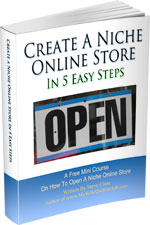
Ready To Get Serious About Starting An Online Business?
If you are really considering starting your own online business, then you have to check out my free mini course on How To Create A Niche Online Store In 5 Easy Steps.
In this 6 day mini course, I reveal the steps that my wife and I took to earn 100 thousand dollars in the span of just a year. Best of all, it's absolutely free!


